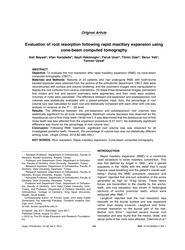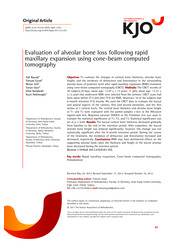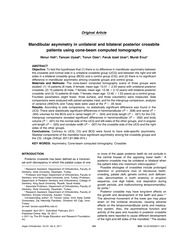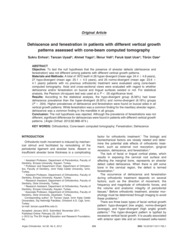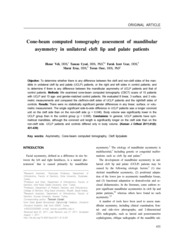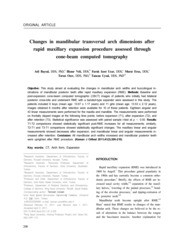Filtreler
Filtreler
Bulunan: 8 Adet 0.000 sn
Ambargo Durumu : Erişime Açık ✕Koleksiyon : FAKÜLTELER ✕Koleksiyon : FAKÜLTELER ✕Koleksiyon : FAKÜLTELER ✕Koleksiyon : FAKÜLTELER ✕Koleksiyon : KLİNİK BİLİMLER BÖLÜ ... ✕İlgili Araştırmacılar : İLKNUR VELİ ✕
Koleksiyon [3]
İlgili Araştırmacılar [4]
Ambargo Durumu [1]
Tam Metin [1]
Veritabanı [1]
Eser Sahibi [4]
Tür [1]
Yayıncı [4]
Kayıt Giriş Tarihi [6]
Yayın Dili [1]
Konu Başlıkları [18]
- Cone-beam computed tomography 4
- Asymmetry 2
- Rapid maxillary expansion 2
- Arch form 1
- CT 1
- Cleft lip/palate 1
- Cone Beam Computed Tomography 1
- Crossbite 1
- Dehiscence 1
- Expansion 1
- Fenestration 1
- Implants 1
- Mandibular incisors 1
- OPG 1
- Orthodontic tooth movement 1
- Orthodontics 1
- Periodontium 1
- Root resorption 1 Daha fazlası Daha az
 ŞÜKRÜ ENHOŞ
ŞÜKRÜ ENHOŞ